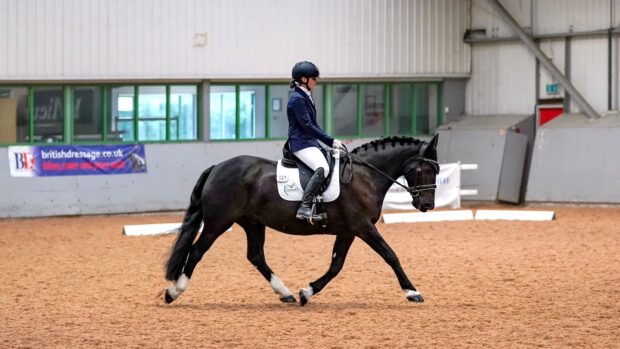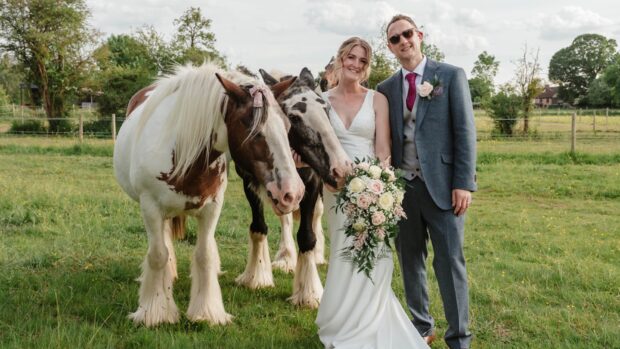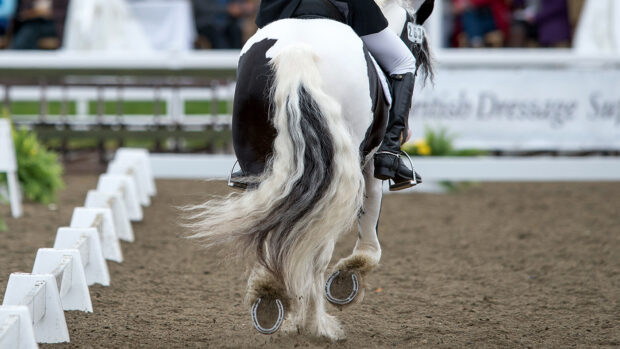Cobs; one of the most popular types of horses to own and show. With more and more people opting for the cob, how can you reign in these competitive classes? Here’s how to show a cob…
Weight divisions
Under British Show Horse Association (BSHA) rules cobs are split into three categories: lightweight, heavyweight and maxi. Mares and geldings, four years old and over are eligible.
- A lightweight should not exceed 155cm and have at least eight-and-a-half inches of bone.
- A heavyweight should also not exceed 155cm and have at least nine-and-a-half inches of bone.
- A maxi cob is more than 155cm but must be of true cob type. There is a recommended height limit of 160cms and judges must pay particular attention to type.
The BSHA offers the following description of the ideal show cob:
‘The cob is a type rather than a breed. A short-legged animal, with bone, substance and quality, capable of carrying a substantial weight. The cob should be well mannered and ideal for nervous or elderly riders. Cobs should have sensible heads, (sometimes Roman nosed), a full generous eye, shapely neck, well muscled, with a hogged mane (showing no significant growth) and well defined wither. The cob should also have clean, strong hocks and all the attributes of a good hunter; low movement and a comfortable ride’
“Regardless of which section they are being shown in, a cob should be a thick set animal with good limbs,” says judge Jack Cochrane. “They should have short cannon bones and good feet. They should also have a decent depth of girth with a good strong back and hind quarters.
“It should be well mannered and a safe, balanced ride. It must be capable of carrying any member of the family on a good day’s hunting”
“I like to think of a cob being short coupled with good limbs for the weight they are going to carry,” explains BSHA ride judge Samantha De Caprio. “I also like a decent front as it gives you a lot to ride. A maxi cob is also a proper cob type, close to the ground with strong knees and hocks with a leg in each corner.”
“A show cob must have a mixture of substance and quality,” adds rider and judge Simon Reynolds. “I look for good flat bone and a low to the ground, straight action. They should have the head of a lady and the backside of a cook.”
Tack and turnout
- A cob should be shown with its mane hogged and its tail pulled, not shaved. The tail should be cut so that when it’s carried it is at the point of the hock
- Quarter marks can complete a well turned out cob with three downward stripes and sharks teeth below. If you’re unsure how to do these ask a professional for some help.
- The tack is also similar to that of a show hunter horse; choose a well-fitted double bridle with a strong noseband that suits the horse. This should only be of plain flat leather, never a coloured or plaited browband.
- Choose good reins for your ride judge; a strong set which are not too narrow.
- The saddle should fit well and riders should never use a dressage saddle with a short girth. Saddles should also be treated so that they are not slippery so the judge feels safe and has a comfortable ride. Make sure the saddle is not too forward cut so it shows off the front and shoulder properly.
Rider turnout
- Bowler hat for gentlemen, navy or black hunting cap for ladies with ribbon tabs inside.
- Tweed jackets for ladies and gentlemen, with neat collar and tie.
- Fawn, cream or buff breeches (not white as show jumpers).
- Plain black or brown boots with garter strap fixing with button at the knee
- Spurs should be worn by adults at the heel seam of the boot, not hanging off the end of the boot.
- Gloves; brown, fawn or tan.
- Showing cane.
Way of going
“I really like a cob to be forward going, but comfortable,” says Samantha. “They should respond to my aids without any pulling, but also have a bit of something about them. I like them to be a happy, educated ride with a good outlook. I also don’t mind a little bit of cheekiness as it gives them that sparkle.
“I do like a good step and of course this will depend on the animal’s breeding. I don’t expect it to move like a lightweight hunter, but it should be workmanlike and cover the ground without having too much knee action.”
“I like a cob to have a nice length of rein and a good sloping shoulder,” adds Jack. “If the shoulder is too straight it will lack movement and may be more suited to pulling a cart, as a collar would sit better on a straight shoulder.
“I also don’t like cobs that are lazy and fat, which need to be kicked all the way round the ring.”
“Just because they are cobs it doesn’t mean they shouldn’t be light and flexible; they should not be fixed in the hand,” advises Simon. “They should be able to work in self-carriage and show suppleness. Cobs should have ground-covering low movement and not be over fat.”
Riders should…
- Find a space so the judge can see you properly.
- Keep a good eye on judges and stewards when you’re being told to go up a gear.
- If you think your horse is going to get upset when it comes to lots of horses galloping, turn a circle and wait – give people their space and in turn your horse isn’t going to get so upset.
Riders shouldn’t
- Present a fat cob; if you have to overload it with weight to make it a cob, then it isn’t right for the class.
- Overtake in the ring; overcrowding can be a problem as the class is so popular but don’t overtake and you should never gallop up behind other competitors.
- Over work your horse; they can become dull and lack sparkle.
Continues below…

H&H’s guide to show hunter pony classes: what the judge is looking for and how to win
H&H talks to the professionals about how to present a show hunter pony correctly...

H&H’s guide to show hunter classes: weight categories, presentation and what makes the judges cringe

Subscribe to Horse & Hound magazine today – and enjoy unlimited website access all year round
Where to compete
All major shows include classes for cobs, culminating in a cob championship.
At smaller shows, the light, heavy and maxi cobs may be put together.
The biggest accolades a cob can win are at the Royal International (RIHS) and Horse of the Year Show (HOYS). In 2019, Our Cashel Blue (Allister Hood) landed both the RIHS and HOYS titles for owner Caroline Tyrrell, and was also supreme at the RIHS.
The RIHS maxi cob champion was Brookdale Limited Edition (Issy Mears) while Lord Alexander (Stephen Norris) reigned at HOYS.
Horse & Hound magazine, out every Thursday, is packed with all the latest news and reports, as well as interviews, specials, nostalgia, vet and training advice. Find out more about getting the magazine delivered to your door every week.




